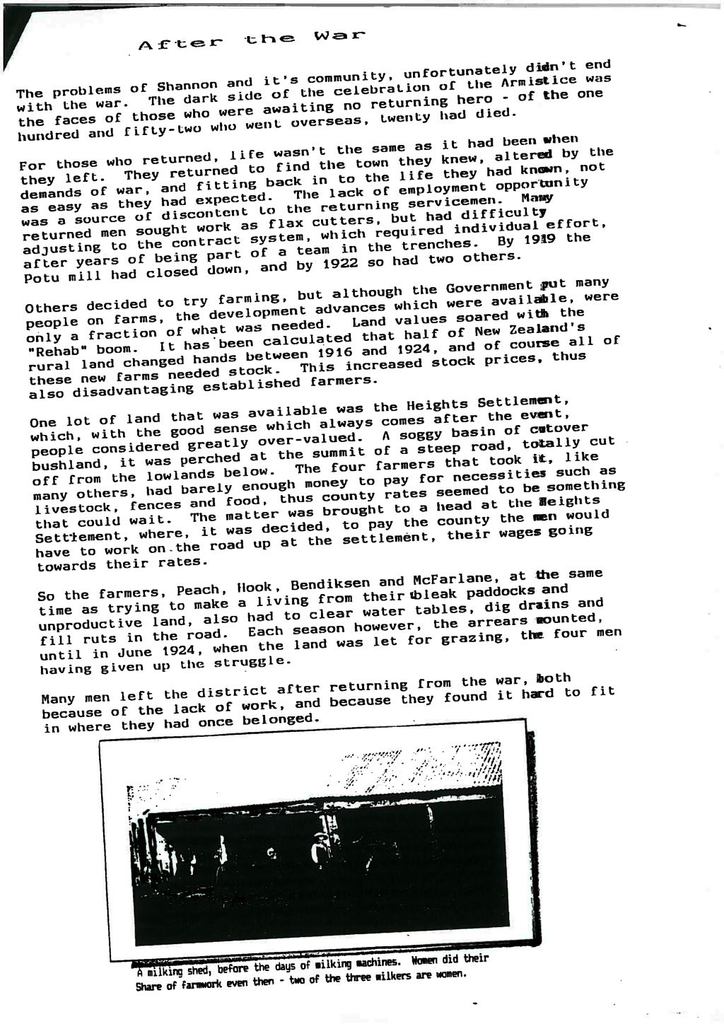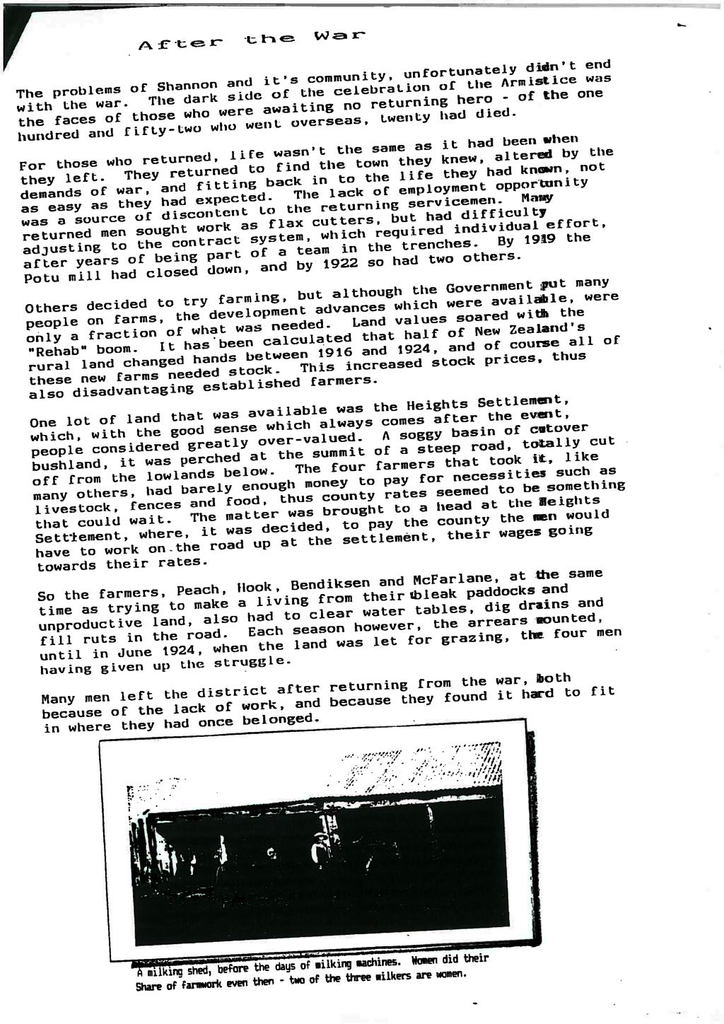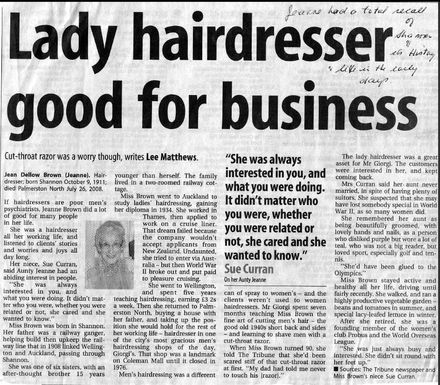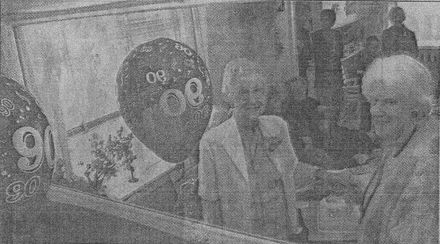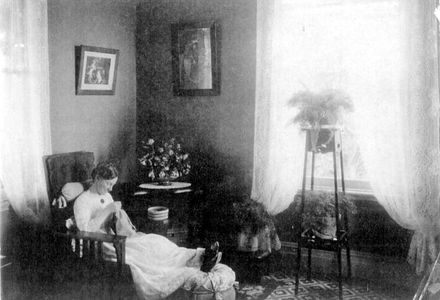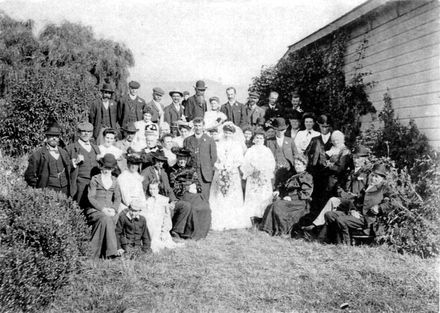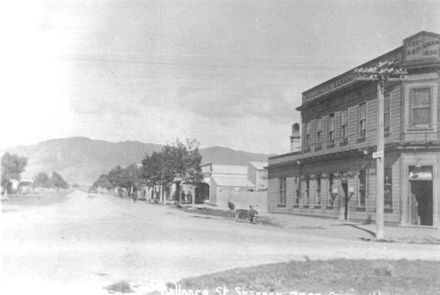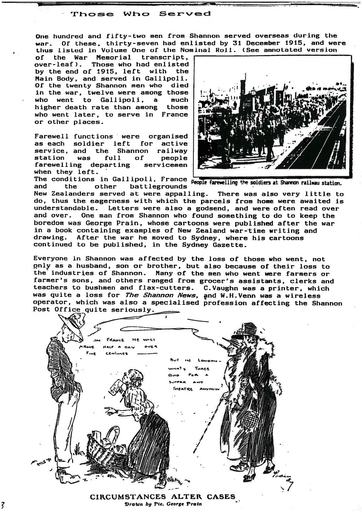After the War
- Description
The dark side of the celebration of the Armistice was the faces of those who were awaiting no returning hero - of the one hundred and fifty-two who went overseas, twenty had died.
For those who returned, life wasn't the same as it had been when they left. They returned to find the town they knew, altered by the demands of war, and fitting back in to the life they had known, not as easy as they had expected. The lack of employment opportunity was a source of discontent to the returning servicemen. Many returned men sought work as flax cutters, but had difficulty adjusting to the contract system, which required individual effort, after years of being part of a team in the trenches. By 1919 the Potu mill had closed down, and by 1922 so had two others.
Others decided to try farming, but although the Government put many people on farms, the development advances which were available, were only a fraction of what was needed. Land values soared with the "Rehab" boom. It has been calculated that half of New Zealand's rural land changed hands between 1916 and 1924, and of course all of these new farms needed stock. This increased stock prices, thus also disadvantaging established farmers.
One lot of land that was available was the Heights Settlement, which, with the good sense which always comes after the event, people considered greatly over-valued. A soggy basin of cutover bushland, it was perched at the summit of a steep road, totally cut off from the lowlands below. The four farmers that took it, like many others, had barely enough money to pay for necessities such as livestock, fences and food, thus county rates seemed to be something that could wait. The matter was brought to a head at the Heights Settlement, where, it was decided, to pay the county the men would have to work on the road up at the settlement, their wages going towards their rates.
So the farmers, Peach, Hook, Bendiksen and McFarlane, at the same time as trying to make a living from their bleak paddocks and unproductive land, also had to clear water tables, dig drains and fill ruts in the road. Each season however, the arrears mounted, until in June 1924, when the land was let for grazing,- the four men having given up the struggle.
Many men left the district after returning from the war, both because of the lack of work, and because they found it hard to fit in where they had once belonged.
Identification
- Date
- 1989
Taxonomy
- Community Tags

